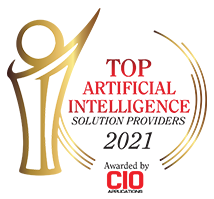
Reaping Digital Harvests: IT Integration for Enhancing Supply Chain Transparency and Food Safety in Agriculture
Today, the term ‘farm to fork’ resonates more with consumers than ever before. The consciousness towards what we consume, how it’s produced, and its journey to our plates is at an all-time high. This has brought the agriculture supply chain under the microscope, where its opacity can no longer be ignored. To ensure transparency and food safety, the integration of Information Technology (IT) into the agriculture supply chain is essential. Let’s delve into the reasons behind this assertion.
Understanding the Agricultural Supply Chain: From Sowing Seeds to Serving Plates
The agriculture supply chain is an intricate web of processes, spanning from the initial cultivation of crops by growers, to harvesting, storage, processing, distribution, and finally, the consumers. Navigating through these steps are a multitude of stakeholders such as farmers, distributors, retailers, and consumers, often operating in silos with limited communication.
This lack of visibility in the supply chain creates blind spots, making it prone to inefficiencies, food adulteration, spoilage, and even fraudulent activities. The key to solving this challenge lies in integrating IT into the agricultural supply chain, a move that ensures transparency and food safety.
The Power of IT Integration in Ensuring Supply Chain Transparency
Information Technology, when embedded into the supply chain, can provide the missing piece in the puzzle, acting as a catalyst for transparency.
Unleashing the Power of Data
Data forms the foundation of transparency. Through technologies like the Internet of Things (IoT), GPS tracking, and drones, real-time data can be gathered on various variables such as weather patterns, soil quality, crop health, and more. This data is then processed and analyzed using machine learning and artificial intelligence, providing valuable insights to optimize farming practices and increase crop yield.
Real-Time Tracking and Monitoring
IT integration facilitates real-time tracking of agricultural products as they traverse through the supply chain. This capability ensures that the quality of the products is maintained throughout their journey, from the farm to the consumer. Any deviation in storage conditions or transportation times that could adversely affect product quality can be detected instantly, allowing for immediate corrective action.
Breaking Down the Silos
A common challenge in the agricultural supply chain is the fragmented operation of stakeholders. IT integration can facilitate seamless communication and collaboration between them. By providing a shared digital platform, all parties can access the same data, enhancing coordination and efficiency across the supply chain.
Enhancing Food Safety through IT Integration
An equally important advantage of IT integration in the agricultural supply chain is enhanced food safety. Here’s how it plays out:
Traceability
The journey of food from farm to fork is complex and often opaque. Consumers, more than ever, demand to know the origins of their food, how it was produced, and if it adheres to safety and quality standards. With IT integration, every step in a product’s journey can be traced and validated, offering consumers the confidence they demand and contributing to food safety.
Proactive Quality Control
IT integration can enable predictive analytics, which in turn can anticipate potential threats to food safety, such as disease outbreaks or pest infestations. This enables preventative measures to be implemented before the problem escalates, thereby protecting the quality and safety of the produce.
Rapid Response to Food Safety Issues
In case a food safety issue does arise, IT integration can facilitate quick identification of the problem source, enabling a rapid and precise response. This could prevent a local issue from becoming a widespread problem, protecting consumers and preserving the reputation of the brands involved.
Future Horizons: IT Integration and Supply Chain Transparency
While IT has already made significant strides in enhancing supply chain transparency and food safety in agriculture, the journey has only just begun. Several promising developments lie on the horizon.
Blockchain: The Next Level of Transparency
Blockchain technology, with its immutable and transparent ledger system, is ideal for ensuring traceability in the agricultural supply chain. It offers an unalterable record of transactions, enhancing credibility and preventing fraud.
The Confluence of Big Data and Artificial Intelligence
The melding of big data with artificial intelligence has transformative potential for the agricultural sector. These technologies can process vast amounts of data, deriving insights that can improve forecasting, optimize resource allocation, and facilitate real-time decision making.
Digital Twins: Virtually Perfect
Digital twins, which are virtual replicas of physical systems, offer another exciting prospect. They can simulate the impact of various factors on agricultural outcomes, allowing for optimized operations and improved resilience to shocks such as climate change or market fluctuations.
Conclusion: Seeding the Future of Agriculture
As we sail into an era marked by digitalization and rising consumer consciousness, the integration of IT in the agricultural supply chain is more than just an option—it’s a necessity. It brings transparency and ensures food safety, two critical components in building a resilient and sustainable food system.
With IT integration, we can go beyond the simple goal of getting food products from point A to B. We can ensure that every step in the journey is transparent, accountable, and optimized for safety. It’s the key to unlocking the agricultural sector’s full potential, ushering in a future where ‘farm to fork’ is more than just a concept, but a reality.
About dFarm
dFarm is a leader in supply chain optimization for the agriculture sector. dFarm offers unparalleled transparency and visibility into supply chain dynamics enabling growers, wholesalers, distributors, and other value chain participants to make smarter decisions leading to more efficient sourcing, improved freshness and quality, reduced wastage and spoilage, and tighter cost control.




